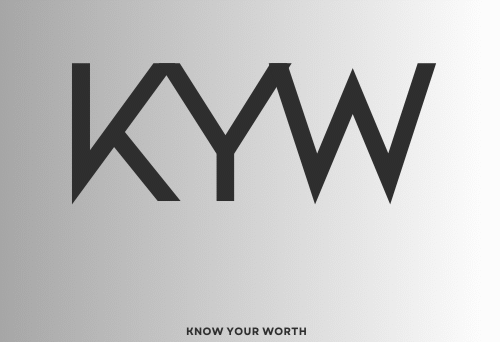
As a new freelancer, every potential client feels like a golden opportunity. But here’s the truth: not all clients are created equal. Some will respect your expertise, pay on time, and become long-term partners. Others will drain your energy, delay payments, and leave you questioning why you ever went freelance.
The difference between a thriving freelance business and a struggling one often comes down to client selection. Learning to identify red flags early can save you countless hours of frustration, protect your mental health, and keep your bank account healthy.
Why Bad Clients Are More Than Just Annoying
Before we dive into the warning signs, let’s be clear about what’s at stake. A bad client doesn’t just make your day unpleasant—they can:
- Damage your cash flow with late or missing payments
- Destroy your work-life balance with unreasonable demands and constant urgency
- Hurt your reputation if they leave negative reviews or spread complaints
- Waste your most valuable resource: time that could be spent serving better clients
- Undermine your confidence and make you doubt your professional abilities
The cost of a bad client extends far beyond a single project. They can derail your entire business trajectory.
Pre-Project Red Flags: Warning Signs During Initial Contact
1. They Lead with Price, Not Value
The Red Flag: Their first message focuses entirely on cost: “What’s your cheapest rate?” or “I found someone who’ll do this for $5/hour. Can you match that?”
Why It Matters: Clients who lead with price typically don’t understand or value professional expertise. They’re shopping for the cheapest option, not the best solution.
What Good Clients Say Instead: “We’re looking for an expert in [your field] to help us achieve [specific outcome]. What would be involved in a project like this?”
2. Vague Project Descriptions
The Red Flag: “I need a website” or “Help me with marketing” without any specifics about scope, goals, or requirements.
Why It Matters: Vague briefs often lead to scope creep, mismatched expectations, and endless revisions. If they can’t articulate what they want, how will you know when you’ve delivered it?
What to Look For: Detailed project briefs, clear objectives, specific deliverables, and defined success metrics.
3. Unrealistic Timelines
The Red Flag: “This should only take you a few hours” or demanding a complex project be completed over the weekend.
Why It Matters: Unrealistic timelines show a client doesn’t understand the work involved and may not respect your professional processes.
4. Poor Communication from the Start
The Red Flag: Taking days to respond to your questions, being consistently unavailable for calls, or communicating only through intermediaries who can’t make decisions.
Why It Matters: If communication is poor before you’re even working together, it will only get worse during the project when quick decisions are needed.
5. They Want to “Test” You with Free Work
The Red Flag: “Do a small sample so we can see your work quality” or “Show us what you’d do for this project, then we’ll decide.”
Why It Matters: Professional clients understand that quality work costs money. Asking for free samples often indicates they don’t value your expertise or may be collecting free ideas from multiple freelancers.
During the Project: Red Flags That Signal Trouble Ahead
6. Constant “Rush Jobs”
The Red Flag: Everything becomes urgent. “Can you have this ready by tomorrow?” becomes their standard request, regardless of the original timeline.
Why It Matters: Chronic urgency usually indicates poor planning on their end, but it becomes your emergency. This pattern is unsustainable and leads to burnout.
7. Micromanagement and Process Control
The Red Flag: Dictating exactly how you should do your work, when you should work, or requiring constant check-ins and updates.
Why It Matters: You’re a professional expert, not an employee. Clients who can’t trust your processes likely won’t trust your results either.
8. Endless Revisions Without Clear Direction
The Red Flag: “Can you make it more… creative?” or “This isn’t quite right” without specific feedback about what needs to change.
Why It Matters: Vague feedback leads to guesswork, wasted time, and frustration. Good clients provide specific, actionable feedback.
9. Scope Creep Disguised as “Small Favors”
The Red Flag: “While you’re at it, can you also…” or “This is just a quick addition.”
Why It Matters: Small additions accumulate quickly and can double your workload without increasing your compensation.
Financial Red Flags: Protecting Your Bottom Line
10. Payment Terms Negotiation
The Red Flag: Trying to extend payment terms (“We typically pay in 60 days”) or asking to pay only after they’ve made money from your work.
Why It Matters: Your cash flow depends on timely payments. Clients who push back on reasonable payment terms often have cash flow issues of their own.
11. Reluctance to Sign Contracts
The Red Flag: “We don’t really need a contract for this” or “Can’t we just do this on a handshake?”
Why It Matters: Professional businesses understand the importance of clear agreements. Reluctance to sign contracts often signals future problems.
12. Questioning Your Rates After Agreement
The Red Flag: Returning to negotiate rates after you’ve already agreed on pricing, especially after seeing your work quality.
Why It Matters: This behavior shows they don’t honor agreements and may indicate future payment problems.
Behavioral Red Flags: Working Relationship Warning Signs
13. Disrespectful Communication
The Red Flag: Consistently rude behavior, belittling your work, or making unreasonable demands.
Why It Matters: Disrespectful clients create a toxic working environment and often escalate their poor behavior over time.
14. High Turnover Stories
The Red Flag: Mentioning they’ve “fired” multiple freelancers or agencies recently, or constantly complaining about previous providers.
Why It Matters: If everyone they work with is “incompetent,” the common factor might be them, not the providers.
15. Boundary Pushing
The Red Flag: Calling or texting at all hours, expecting immediate responses to non-urgent matters, or contacting you on personal social media accounts.
Why It Matters: Clients who don’t respect boundaries will gradually erode your work-life balance and professional relationship.
Green Flags: What Good Clients Look Like
To help you recognize quality clients, here are the positive signs to look for:
- Clear communication about project goals, timelines, and expectations
- Respect for your expertise and willingness to trust your professional judgment
- Prompt responses to your questions and requests for information
- Professional business practices including contracts, defined processes, and proper invoicing
- Reasonable timelines that account for quality work and revisions
- Specific, constructive feedback when revisions are needed
- Payment reliability with clear terms and on-time execution
- Long-term thinking about the relationship, not just individual projects
What to Do When You Spot Red Flags
Early Stage Red Flags
If you notice red flags during initial conversations:
- Ask clarifying questions to see if the issues can be resolved
- Set clear boundaries about your processes and requirements
- Trust your gut—if something feels off, it probably is
- Be prepared to walk away from opportunities that aren’t a good fit
Mid-Project Red Flags
If red flags emerge during a project:
- Document everything in writing for your protection
- Address issues directly with clear, professional communication
- Refer back to your contract for scope, timeline, and payment terms
- Consider completing the current project but not accepting future work
When to Fire a Client
Sometimes the best business decision is ending a client relationship:
- When they consistently violate agreed-upon terms
- If they become abusive or disrespectful
- When scope creep becomes unmanageable
- If payment issues persist despite multiple discussions
Building Your Client Filter System
Create a systematic approach to client evaluation:
1. Initial Inquiry Assessment
- How did they find you?
- What’s the quality of their initial communication?
- Do they ask intelligent questions about your services?
2. Discovery Call Evaluation
- Are they prepared for the conversation?
- Do they listen to your recommendations?
- Can they clearly articulate their goals?
3. Decision-Making Process
- How quickly can they make decisions?
- Who has final approval authority?
- Do they have a realistic budget and timeline?
4. Contract and Payment Discussion
- Are they comfortable with your standard terms?
- Do they have questions that show they’ve read your proposal?
- How do they handle the payment structure conversation?
The Long-Term Impact of Good Client Selection
Choosing clients carefully isn’t about being picky—it’s about building a sustainable business. When you work with good clients:
- Your reputation grows through positive testimonials and referrals
- Your skills develop faster because you’re working on meaningful projects
- Your rates can increase because you’re delivering real value
- Your stress decreases and work-life balance improves
- Your business becomes more profitable through efficiency and client retention
Remember: You’re Running a Business, Not a Charity
As a freelancer, you have the power to choose who you work with. This isn’t about being difficult or elitist—it’s about protecting your business and ensuring you can continue providing great service to clients who value what you do.
Bad clients don’t just hurt your current project; they can derail your entire freelance career. By learning to spot red flags early and having the confidence to walk away from poor opportunities, you create space for the good clients who will help your business thrive.
Your expertise is valuable. Your time is limited. Choose clients who recognize both, and watch your freelance business transform from a struggle into a success.
Want to ensure you’re charging those good clients appropriately? Use our Freelance Rate Calculator to determine your true worth and build a pricing strategy that attracts quality clients while supporting your business goals.



